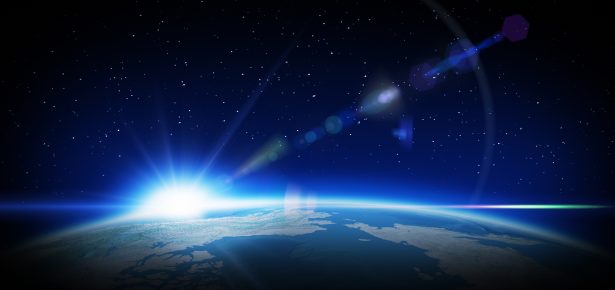
Inherent in in all of us, are many possibilities, and among those possibilities are multiple states of consciousness. While waking consciousness is fundamental to daily living, there are other, altered states of consciousness intrinsic to the creative process. Manifesting across domains in the arts, the sciences, sports, and practices of self-transformation, they extend in time from Friedrich Wilhelm Nietzsche’s lightning flashes of insight to the Tibetan lung-gum-pa monks, who ran for days in meditation across the high plateau. Trance states essential to creativity are part of our evolutionary heritage and range from the reveries of everyday life to plans that alter civilizations. Appearing in daydreams, night dreams, visualizations, meditations, focused attention, remembering, planning, absorption, and flow, this book identifies them all as aspects of a creative trance, and they have changed our world.
Albert Einstein’s daydream at age sixteen of riding a light beam, became a basis for his Theory of Relativity. The Nobel Prize winning cytogeneticist, Barbara McClintock, imagined she was transported into the corn cells she studied to view the mobility of their genetic elements. While running to break the barrier of the four-minute mile, Roger Bannister said it seemed as if the world stood still or did not exist. In a creative trance, the ego may willingly relinquish conscious control of the work. Then people can feel like vehicles for a greater or divine inspiration, as did both Giacomo Puccini and Stevie Wonder. Or, like Alice Walker, they might watch the fictional characters in their writing come alive and engage in conversations. As the pianist Rosalyn Tureck insists, “I do what Bach tells me to do. I never tell the music what to do.”
Elias Howe found the solution to his invention of the sewing machine in a dream and the mathematician Srinivas Ramanujan dreamt his mathematical formulas. The idea for Mary Shelley’s novel Frankenstein came to her in the hypnagogic state between wakefulness and sleep, as did Thomas Edison’s myriad inventions. For Marian Anderson, the time before sleep was when she became “lost in the spirit of the song.” Inspirational dreams and associated altered states are acknowledged across cultures. The Benin people of Africa believe the deity Olokun inspires creativity through dreams and states of reverie. Australian Aborigines depict the altered state of Dreamtime in their paintings, revealing a parallel world of ancestors, spirits, and the divine. The Native North American Chippewa weave dream images into their beadwork and banners, and in India, the Saroa decorate the walls of their homes with images from their dreams.
Illness can intensify a creative trance as it did for Ludwig van Beethoven. Although his hearing diminished, his work became stronger. Itchiku Kubota called his experience of acute hepatitis, “the time of deepest import in my life as an artist.” Afterward, he redesigned an ancient tradition of Japanese textiles and kimonos. People with disabilities can have a double creative trance. In addition to the altered states in performing sports, Paralympic competitions, dance, wheelchair dance, music, science, and visual art, sometimes without limbs, vision, or hearing, they share a triumph of achievement through accomplishing things that may have been previously thought to be impossible. Dementia can also have states of creative trance. Iris Murdoch wrote her novel, Jackson’s Dilemma, in the early stages of Alzheimer’s disease and frontotemporal dementia enhanced the dramatic aspects of Maurice Ravel’s most famous musical work, Bolero.
Whatever affects the brain structures the creative trance. The neural challenges of learning disorders, such as dyslexia and attention deficit disorder, now known as attention deficit hyperactivity disorder (ADHD) may be viewed as opportunities to build new pathways for creative expression. Both dyslexia and ADHD structured Leonardo da Vinci’s creative trance, and he used them to design machines that were centuries ahead of his time and to usher in the High Renaissance in Italian art. The creative trance can also be central to creating and recreating the self. Jungian psychology uses active imagination, a type of guided meditation, to uncover the unconscious origins of emotional concerns. Meditations within spiritual traditions can achieve trance levels that are entryways to states beyond trance, becoming experiences of transcendence. The neural activity of the creative trance is examined through the lens of cognitive neuroscience, while chaos theory and complexity theory reveal its underlying nonlinear dynamics. Even instances of superhuman strength, such as lifting a car to free someone trapped beneath it, appear to happen in a condition of trance. When these strengths manifest during the altered states of a creative trance, we realize that we have the potential to be far more than we are or even imagined that we could be.
Latest Comments
Have your say!